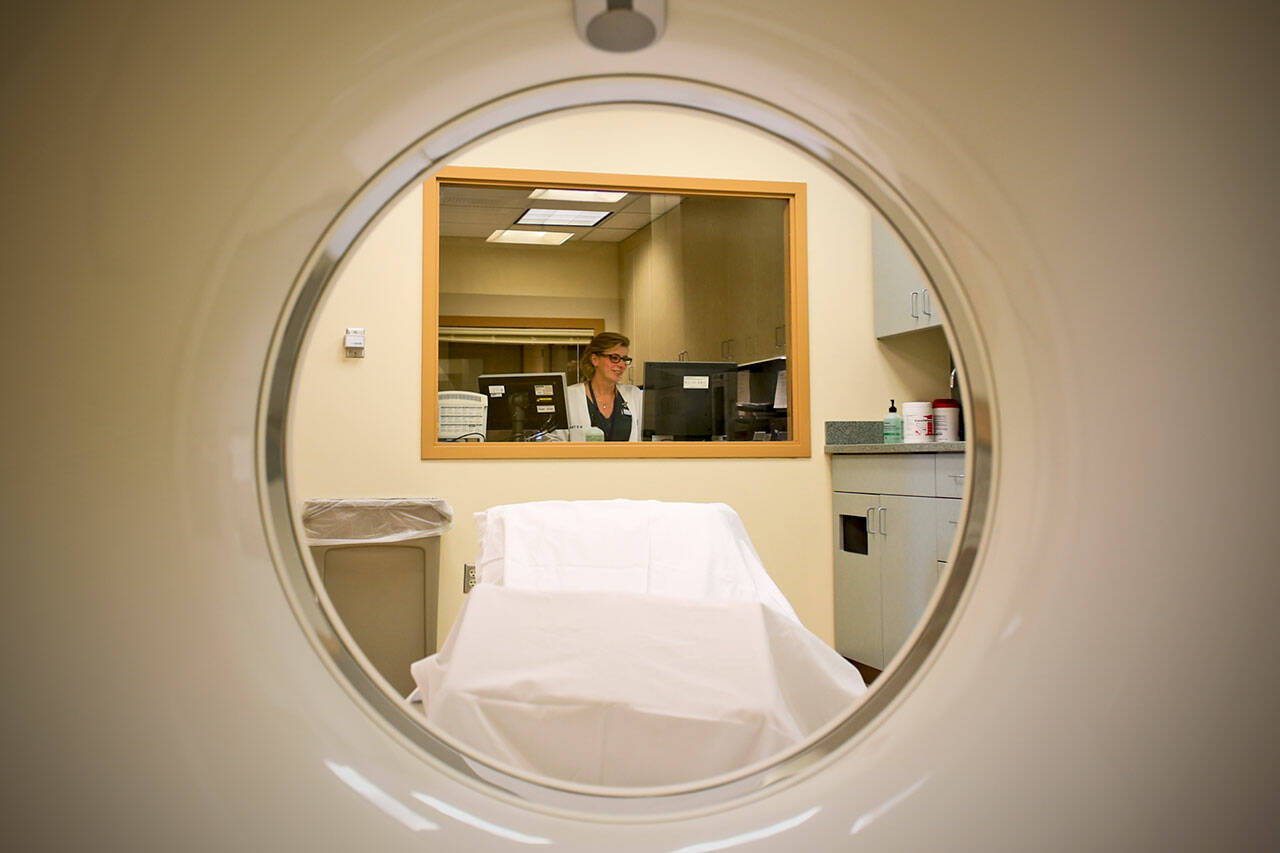By The Herald Editorial Board
Most of us, after receiving a medical bill — whether it’s for a hospital stay, a checkup with the doctor, an outpatient procedure or even a prescription — write the check for our share without thinking much about the costs or even how much those costs can vary depending on where we live or where we get our care.
If we’re fortunate to have coverage through an employer or Medicaid, we can be somewhat insulated from needing to understand the costs and those geographic differences. But a closer look at those numbers might surprise you.
A detailed and exhaustive study of medical costs across Washington state, released Tuesday by the Washington Health Alliance, should now bring some attention to health care costs, and it offers some interesting comparisons by county and region in the state. As well, it should spur some deeper questions about the affordability of health care and what responses need to be considered.
The Total Cost of Care Report has analyzed what was spent to deliver health care services to state residents for 2018, 2019 and 2020, examining spending for inpatient care such as surgery and hospital stays; outpatient care, such as lab tests and procedures; professional care such as therapy and preventative care; prescription drugs; and other services, including ambulance, home health care and durable medical equipment. Insurance premiums weren’t included in the study, to keep the focus on the costs of medical care.
All of that data now is available on an interactive website — wacommunitycheckup.org — using a state map and related charts to show costs by county and region as well as a look at the relative health of each county’s population, providing a figure for “per member, per month,” the average amount spent each month for care for either an insured person or Medicaid recipient.
To use Snohomish County as an example, the “per member, per month” spent in the county for the range of services averaged $477 in 2020, about $12 more than the statewide average of $465. But the website allows an even deeper dive into data that shows the variability for different services. Outpatient services are a relative bargain in Snohomish County, $126.06, about $7.50 cheaper than the statewide average. However, those in the county were charged more for professional visits on a monthly basis; $153.88, $16.44 more than the state average.
Likewise, the per member, per month spending for Medicaid recipients in the county for 2020 ($298) was $20 more than the state average.
And cost differences were — well — all over the map; Wahkiakum County, in the state’s southwest, saw costs that were nearly $82 less than the statewide average, while those in Okanagan County were charged $60 more each month than the state average, with outpatient care driving most of the difference.
This data and the comparison will be of most interest to those paying the bills, specifically the insurance companies and their customers, including companies and others that provide an insurance benefit. But since the insurance premiums many of us pay reflect the cost of coverage — not to mention what we pay before our deductible is reached — this concerns everyone.
Or should.
Nancy Giunto, the executive director for Washington Health Alliance — which represents health care providers, hospitals, doctors, patients, insurance providers and insurance purchasers — said the years-long effort was undertaken to provide a baseline of information about health care costs that can direct changes that can keep care affordable.
“To leverage change you need a big group working together,” Giunto said during a meeting this week with the editorial board. “Even a company the size of Boeing can’t impact the market alone. It takes a collaborative effort; it takes all stakeholders. And plans have to think about the services they authorize.”
The information, said Mark Pregler, the alliance’s director of data management and analytics, is geared to employers purchasing insurance and providers. ”It starts to give them an indication of where the spending differences might be.” But cost-conscious providers are also interested in this as a comparison with their peers.
And already, the alliance itself is pairing the information with past research to further refine its efforts, including a long-running look at “low-value” care that it has examined it its “Do No Harm” reports, examining the prevalence and costs from unnecessary, duplicative or wasteful tests and procedures that risk medical, emotional and financial harm for patients.
One early focus, Giunto said, has begun looking at the diagnosis and treatment of low-back pain, related to examining the costs for imaging and prescription opioids with an aim to shift care for pain treatment that is evidence based.
Backed now by a wealth of information in the Total Cost of Care report, that examination of costs and outcomes can help drive decisions that help assure more affordable care.
“When I speak to groups of employers, the first thing I ask is ‘Do you understand how variable cost and quality are?’” Giunto said. “And most consumers don’t understand that.”
The costs of knee surgery, for example can vary widely, not just county to county, but even just across the street.
“Consumers need to become educated that the costs are highly variable, as is quality,” Giunto said. “If this begins to highlight for them the variation at a geographic level perhaps they’ll begin to ask their providers about what their health care costs.”
Getting a better idea of the costs of care — especially before we get the bill in the mail — will create more transparency into what we’re paying and what we’re getting in return.
Talk to us
> Give us your news tips.
> Send us a letter to the editor.
> More Herald contact information.

























